By DON McINTOSH, Associate Editor
The National Labor Relations Board (NLRB) case against Boeing had its first day in court June 14. After months of intense politicization of the case by Republicans in Congress, the hearing itself was anti-climactic.
In a Seattle federal courthouse, Boeing lawyers asked Administrative Law Judge Clifford Anderson to dismiss the case outright. Anderson gave the NLRB a week to respond, and Boeing three days to respond to their response. These and other preliminary legal maneuvers give a sense of how long the case could go on — if Boeing and the Machinists District Lodge 751 don’t settle the case voluntarily out of court.
The case goes to the heart of workers’ right to strike. Today, Boeing Machinists are one of the few groups of American workers that can strike effectively, since it’s very difficult to replace them. Their work is highly skilled and specialized, and their product is very complicated and vulnerable to mistakes. So when Boeing Machinists strike, production halts. And they’ve struck five times in 35 years — 1977, 1989, 1995, 2005, and 2008. The power of those strikes — which came from Boeing’s knowledge that it couldn’t make planes without them — has enabled Boeing’s union workers to earn very decent wages and benefits. But in the last decade, Boeing has moved aggressively to outsource aircraft parts and subassemblies to foreign “partners” and vendors. And the company has been keen to develop its South Carolina venture as a non-union alternative to its Puget Sound and Portland manufacturing sites.
Boeing might have made the shift to South Carolina with modesty … and gotten away with it without any legal hassle. Instead, it waged an ugly public campaign of blackmail, pitting Washington and South Carolina against each other in a race to see which state could offer the most tax giveaways, public subsidies, and stripped-down regulations. And company higher-ups repeatedly used the threat of a move as a bargaining stick against the union and as a propaganda weapon against unionization.
Finally, when Boeing announced Oct. 28, 2009 that it would locate its second 787 Dreamliner assembly line in South Carolina, company executives — CEO Jim McNerney, Executive Vice President Jim Albaugh, Vice President Ray Conner, and spokesman Jim Proulx — made repeated public statements linking the decision to past strikes. They made that connection in statements to the press, in a quarterly earnings conference call with Wall Street analysts, even in a company memo to all employees.
Given all that evidence, Boeing may have a very hard time proving that undermining its union workers’ right to strike was not a motive. The judge may have to decide how much a motive it was compared with other motives for setting up in South Carolina. The new $750 million facility in North Charles-ton, with 1,000 nonunion workers, opened June 10.
District Lodge 751 of the International Association of Machinists and Aerospace Workers (IAM) filed the NLRB charge March 26, 2010. After a year-long investigation, the NLRB agreed with IAM that Boeing broke federal labor law when it decided in late 2009 to locate a second 787 production line in North Charleston, South Carolina — because its Seattle and Portland employees have sometimes gone on strike.
In its complaint issued April 20, the NLRB seeks a court order that Boeing instead operate its second 787 line in Washington, and use supply lines maintained by its Seattle and Portland facilities. It’s also asking that a Boeing executive read a legal notice pledging not to retaliate against employees for striking — or have it read by an NLRB agent in his presence — for broadcast to all employees on the company’s intranet system.
Boeing, in its legal response, denies that it broke the law and says its decision to locate in South Carolina was based on the state’s “favorable business environment” and significant financial incentives, and that it would have made the same decision even if it had not taken into consideration the impact of future strikes.
Boeing has at least 12 attorneys with three law firms officially attached to the case, one of them the son of U.S. Supreme Court Justice Antonin Scalia. The NLRB has three attorneys assigned to the case. The IAM has one.
Thus far, early legal maneuvers haven’t signaled how the judge will rule. With support from the company, three Boeing workers in South Carolina petitioned the judge to be allowed to join the case as “intervenors,” giving them a separate voice in the trial and any settlement talks. IAM opposed the petition. On June 8, Judge Anderson denied the request. [However, on June 20, the NLRB’s full board in Washington, D.C., intervened in the case to grant the three a limited right — to file a legal brief in the case after the hearing concludes.]
On June 9, attorneys general from 16 states, supported by Boeing, asked to be allowed to file “friend of the court” briefs in the case. The NLRB and IAM opposed the request. On June 16, Judge Anderson ruled that the attorneys general could file the briefs, but only to address the NLRB’s proposed remedy, not whether or not a violation of federal labor law occurred.
And on June 23, Anderson rejected Boeing’s highly unusual request to subpoena the NLRB’s investigation documents.
“The investigation of this case by the NLRB is not on trial. The trial will be about the facts and the law,” said David Campbell, attorney for the Machinists Union. “Boeing continues to avoid the real issue. If they are so confident in their case, as their CEO told the Wall Street Journal, they should have their day in court and try their case.”



[…] in April, National Labor Relations Board dared to enforce federal labor law in a case involving Boeing, and all hell broke loose in Congress among […]